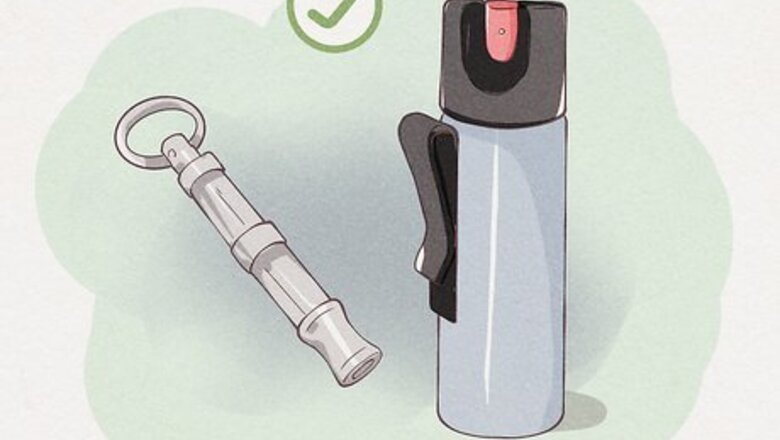
views
Dealing with an Approaching Dog
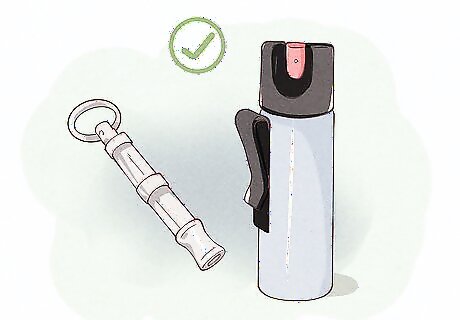
Carry protection. Depending on where you are walking, choose a way to protect yourself. You may choose to carry a large stick, a dog whistle, dog deterrent spray, or a stun gun. You can purchase commercial products that are proven to deter dog attacks. Look for a whistle that irritates dogs. You can blow the whistle and most dogs will run away from you. A traditional whistle can also work by startling the dog. In addition to the traditional stun gun, you can find stun batons that not only work on dogs but may frighten them away before you have to use it. The dog will see the baton and hear its electric charge, frightening it.
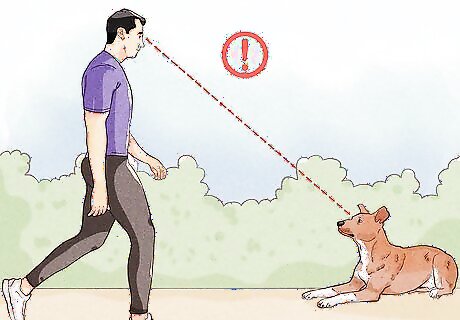
Avoid looking the dog in the eye. Don't make eye contact because the dog could see it as a challenge. Instead, watch the dog in your peripheral vision. Turn at a 90 degree angle to the dog to communicate to it that you mean no threat.

Keep your mouth closed. Baring teeth is a sign of aggression for dogs, so smiling or having your mouth open can signal to the dog that you are a threat. Instead, press your lips together to hide your teeth.
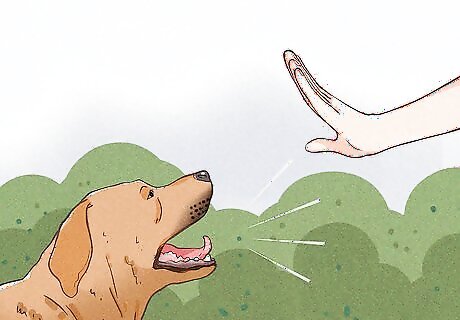
Shout firm commands to the dog. While commands might not work as well for stray dogs, yelling a firm, one-word command can get a dog to back off. Try commands such as “Stop”, “No,” and “Back”. Don't use a friendly voice when speaking to the dog, and avoid screaming or shrieking.
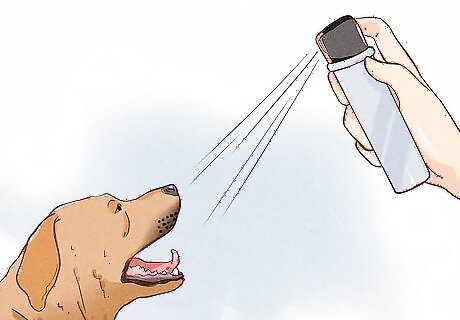
Spray water on the dog. Carry a spray bottle or a water bottle that has a nozzle. If you are approached by an aggressive dog, spraying it with water can get it to run off.
Blocking an Attack
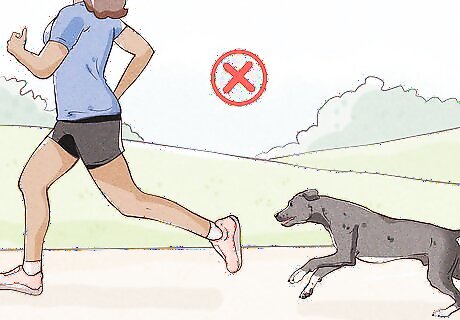
Avoid running away. If you run, the dog will instinctively try to catch you. It will see you as prey to chase down. Instead, you want to make yourself seem like you aren't a threat and aren't prey.
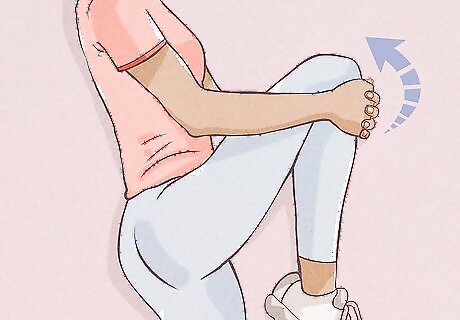
Bring your knee up. Protect your torso and face by lifting your knee in front of your body. If the dog does bite or scratch, it won't be able to reach your stomach, neck, or face.
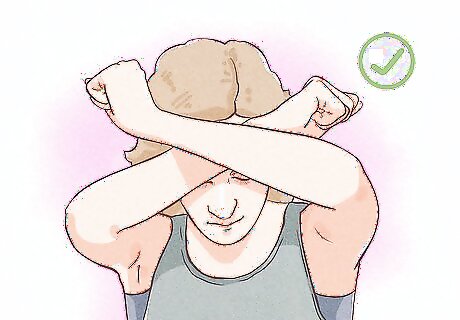
Cross your arms in front of your face. Larger breeds instinctively go for your face, so block them with your arms. Crossing your arms will put up a stronger barrier than just flailing your arms in front of your face. Further protect your head by tucking it under your arms. Lean your head forward and fold your crossed arms backward so that your head is covered.

Roll into a ball. Since dogs have prey instinct, curling into a ball can end the dog's urge to attack. While you may be afraid to lay on the ground, it's the safest option during a dog attack. Just play dead. Don't move or try to scoot away. Just curl as tightly into a ball as you can. Remove any items of clothing that may be around your neck since the dog may pull on it to play tug-of-war, which could strangle you. Fight back only if the dog is small. Fighting back can make the dog fight harder, especially if it's a larger breed that can overpower you.
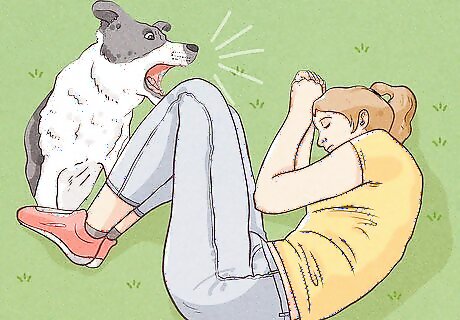
Ignore the dog. Don't try to engage the dog at all while you're on the ground. That means don't look at the dog, don't try to talk to it, and don't try to sooth it by petting it. The dog is in attack mode, and engaging with it will only antagonize it more. You can continue to shout commands if you've chosen to do so.
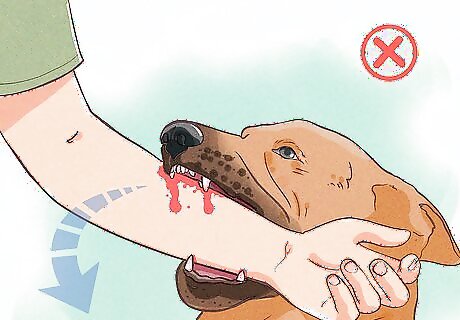
Avoid pulling away if the dog bites you. The dog will only struggle to bite harder and hold on if you try to pull away. Additionally, you can rip the skin more and make your wound worse.
Avoiding Encounters with Dogs
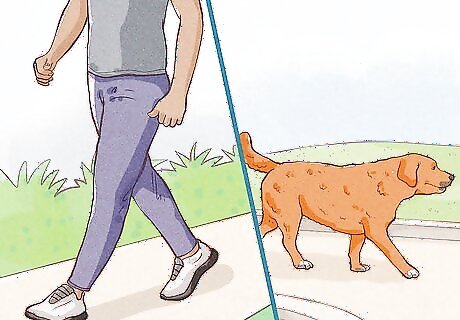
Choose safer places to walk. If you know that dogs frequent a particular area, choose another path for your walk. This is especially important if the dogs are strays as they are more likely to be hungry or territorial. While it's common for dogs to share walkways with people, think about how comfortable you are around dogs before you go to an area that is popular for dog walking. Dogs can sense emotions and will know if you're uncomfortable, which could trigger a stressed dog. Be on guard while walking on country roads. Unwanted dogs are often dumped in the country and left to fend for themselves, which leads to roaming dogs along country roads. Always carry a big stick and other protective items such as a stun gun while walking alone on a country road. If you are going on a walk to explore a new area, ask the locals about the likelihood of dog encounters. Dogs roam in packs in some countries or rural areas, so get information about how to stay safe before you go exploring.
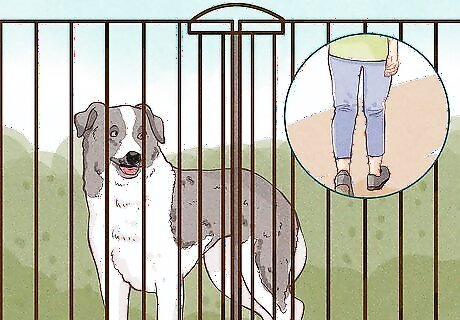
Cross the street if you see a fenced in dog. Dogs are very territorial and will aggressively defend their home. If you see a dog or know that a dog lives at a particular house, change up your route to avoid the dog. Large dogs can jump fences if they're agitated.
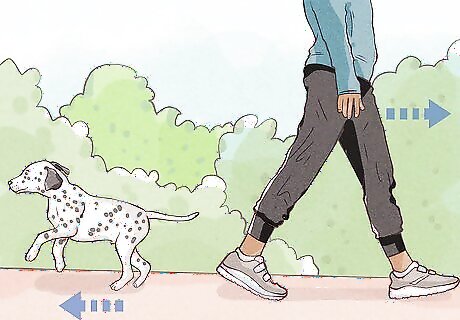
Be sure not to surprise a dog. If you see a dog that is walking near you or is engaged in an activity nearby, don't walk up on it. It's best to quietly walk in the opposite direction. Surprising a dog can make even the gentlest dog act out aggressively because it's afraid.
Approaching a Dog the Right Way
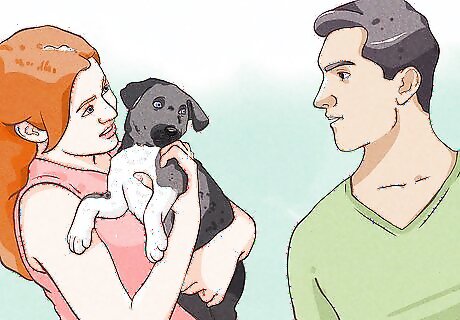
Ask the dog's owner before you approach. Some dogs aren't ready to meet new people, so don't assume that a dog that is out for its walk wants to be petted. The owner can also offer advice on how to best engage the dog if it is friendly. Don't run or move quickly toward a dog. Never approach or pet a dog that is nursing her puppies.
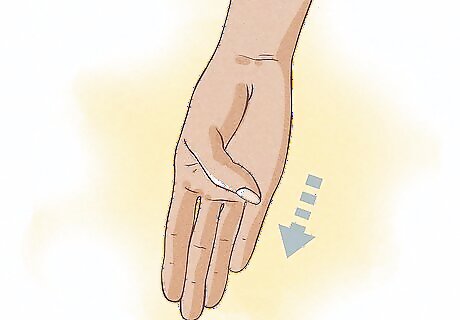
Keep your hand flat with your fingers together. A flat hand will keep you safe and show the dog that you aren't a threat. Extend your hand but don't touch the dog until it's ready.
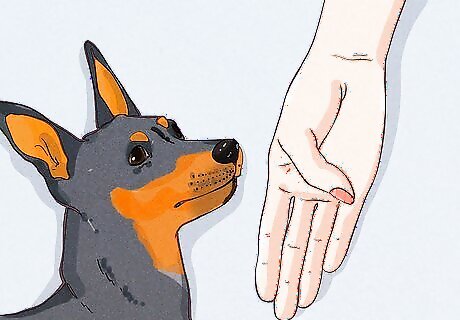
Wait for the dog to come to you. If the dog is open to you petting it, then it will come to you. Keep your hand extended so that the dog can smell you and decide if it wants you to pet it. If you are afraid, don't reach out to the dog. Dogs can sense your emotions and might get scared.
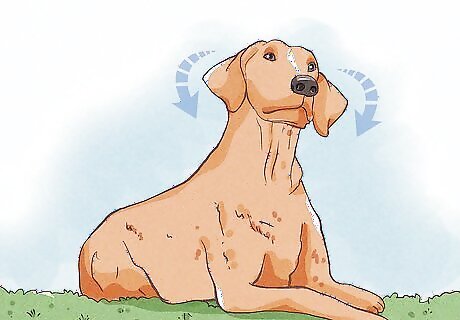
Watch the dog's behavior. A friendly dog will perk his ears and lower his head. A dog that tilts his ears back, growls, or cowers does not want to be petted, so slowly back away. If the dog shows that it's okay with you, gently pet it. Pet the dog only on his head or upper back. Lightly pet the dog in his safe spots, avoiding his belly, tails, ears, and feet.
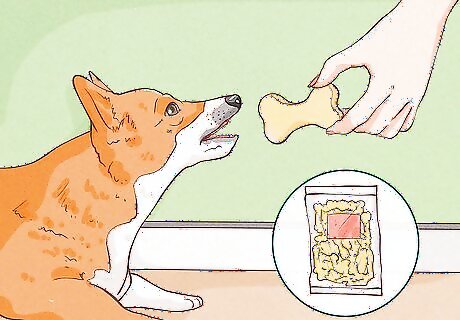
Give the dog a treat. If you know that there are a lot of dogs where you like to walk, consider carrying treats, such as a milk bone. Giving the dog a small treat can make you instant friends. Ask the dog's owner before giving it a treat. The dog may be on a special diet or may have already had treats.




















Comments
0 comment